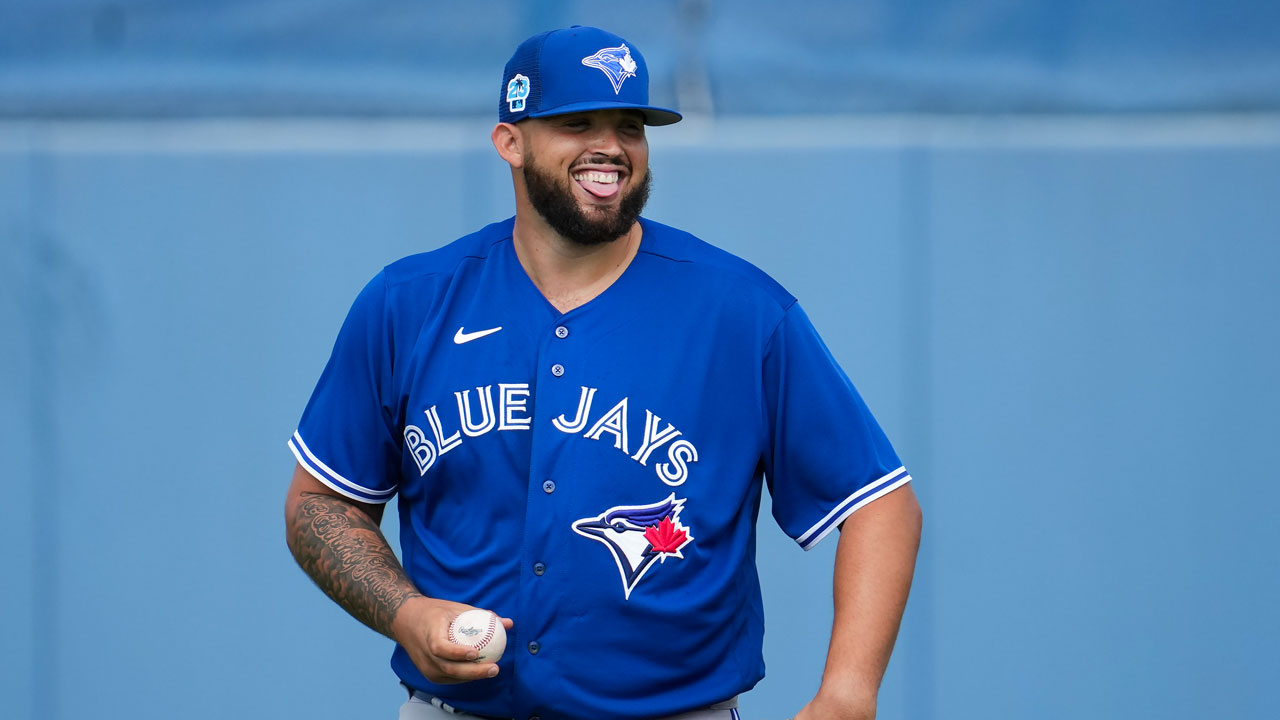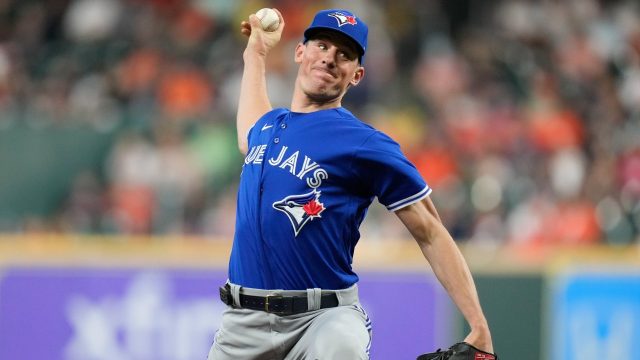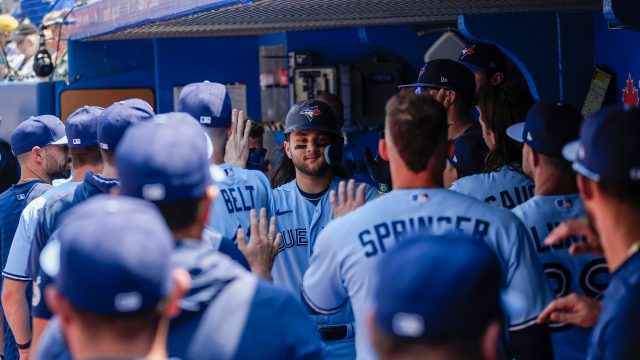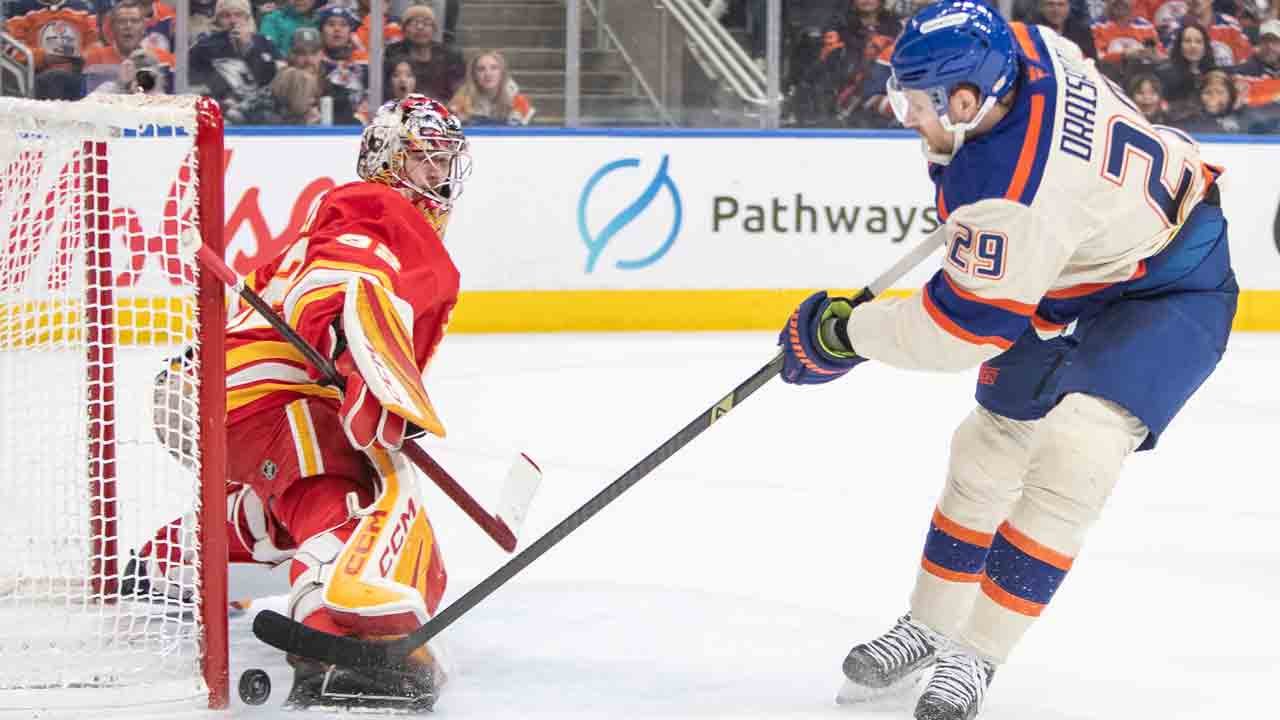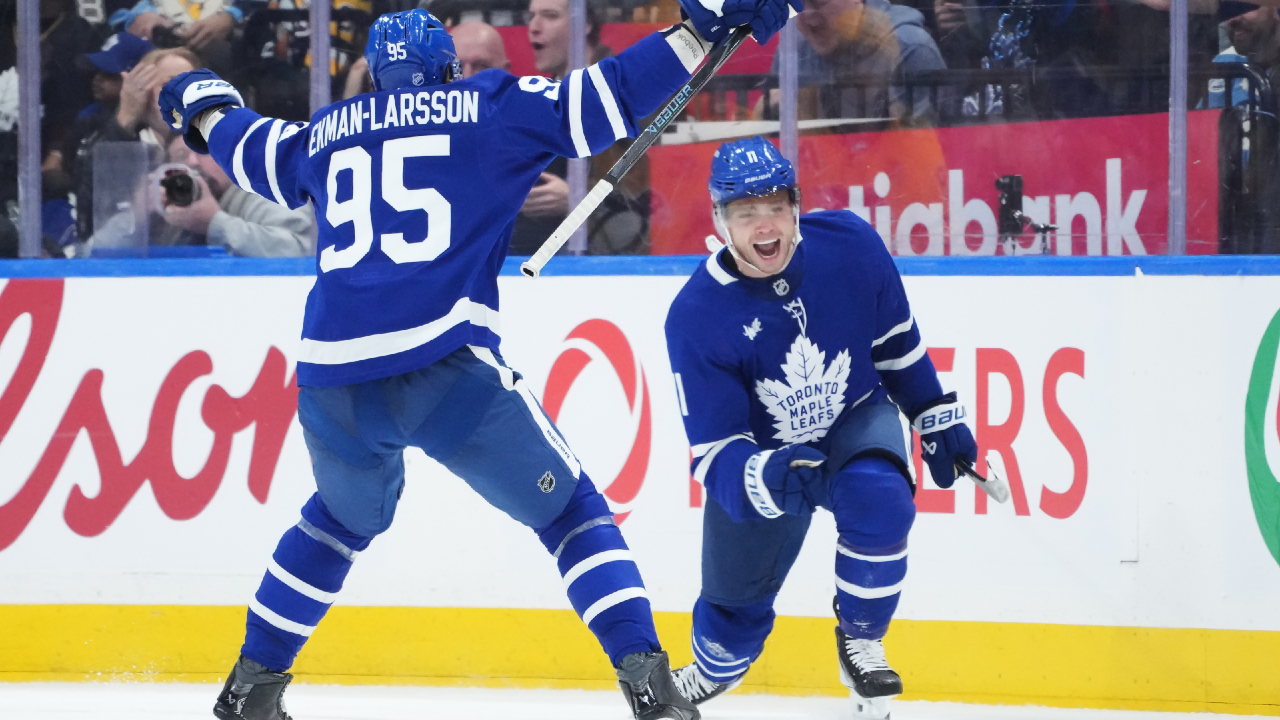
TORONTO — Matt Chapman looks up toward the sky, hands on his hips, with a sense of frustration etched on his face. It’s the seventh inning of a game against the Atlanta Braves in mid-May and he just fielded a groundball cleanly but delivered an errant throw that sailed over an outstretched Vladimir Guerrero Jr. at first base.
It’s the second error the Toronto Blue Jays third baseman has committed in the game and that means infield instructor Luis Rivera can expect a conversation once the inning is over.
That’s been a ritual for Chapman since he joined the Blue Jays last season. Whenever he heads to the dugout following an inning in which he committed an error, he’ll make a beeline for Rivera so the two can dissect the play. However, Rivera usually doesn’t do much talking.
“He’ll let me know: ‘I missed this play because this reason,’ or, ‘I made that bad throw because this reason,’” says Rivera, who’s also the Blue Jays’ third base coach. “Usually he knows why he made a mistake. Some of the guys, I’m trying to [explain]‘OK, this is what happened,’ and you might try to show them a video. [But Chapman] always knows.”
Chapman’s pride in his glovework has been well-documented, of course. Even though he’s enjoying an impressive offensive campaign in 2023, defence has always been the calling card of the three-time Gold Glove winner.
Yet that sterling reputation has been penetrated by some small holes. Chapman lost out on the American League Gold Glove to Baltimore Orioles third baseman Ramon Urias last season and, this year, some advanced defensive metrics actually painted him as a below-average defender in the early going.
The good: Chapman entered Friday with five defensive runs saved (DRS), tied for third in baseball with Tampa Bay’s Taylor Walls.
The not as good: He ranked near the bottom of the league in puts above average (OAA), with a minus-2 mark that was in the 39th percentile just a few weeks ago, before bringing those numbers up drastically to 2 OAA and the 83rd percentile, entering Friday’s play.
Defensive metrics can sometimes be confusing to digest, in part because they’re less cut-and-dry than what a player produces on offence. The volatility of Chapman’s numbers, both last season and over the first two months of this campaign, is a glaring example of just that. However, the 2023 Blue Jays, as a team, appear to be just as confusing from a defensive perspective.
The good: The Blue Jays began Friday with 35 DRS, easily the best in the majors, 14 runs ahead of the Arizona Diamondbacks and Milwaukee Brewers, who were both tied for second.
The not so good: The club’s 2 OAA is 13th in baseball, well behind the San Diego Padres, who lead MLB with 16.
Blue Jays manager John Schneider is well-aware of the discrepancy.
“It just depends on how you look at it,” Schneider says. “Outs above average and defensive runs saved, I put them kind of in a separate vacuum. But it’s just the efficiency in which we’re executing outs is what I really look at. Keeping lineups where they should be, not giving extra hitters [at-bats], keeping guys lined up correctly in the bullpen. Just [capitalizing on]every out that should be recorded.”
Taking a deeper look at Chapman, the Blue Jays and the conflicting defensive stats that surround them might not end any debates about how to quantify defence in baseball. However, the act of examination alone does, in fact, prove instructional. And while some players and coaches may not care for defensive metrics, big-league front offices have a lot to gain by getting it right.
***
Before going any further, it’s worth taking a closer look at DRS and OAA. An easy way to digest the stats, if you will, is to look at them as if DRS is a meal and OAA is the ingredient, according to Mark Simon, researcher at Sports Info Solutions, the company that calculates DRS.
“Defensive runs saved is trying to capture the entirety of something, whereas OAA is just trying to capture a small piece of the puzzle,” Simon says during an interview earlier this season.
DRS is more of an all-encompassing stat that combines many components to evaluate position-specific skills, notes Simon. Those can include:
• Turning batted balls into outs (utilizing a player’s range).
• Pitch blocking, pitch framing, stolen-base deterrence.
• Double plays, bunts, scooped throws for a first baseman.
• Outfield arm.
•Other plays judged by video review, such as home run robberies.
OAA, on the other hand, is a Baseball Savant stat that simply measures a player’s ability to turn a batted ball into an out, incorporating a combination of range and the completion of the play, which most often happens by a throw. Essentially, it calculates how many plays someone had a greater-than-zero per cent chance of getting an out (based on a large sample size of similar plays) and compares the number of outs that player got versus the number of outs that all the out probabilities combined say they should have made. It’s also worth noting that OAA is not tracked for pitchers and catchers.
When it comes to evaluating the Blue Jays’ defence as a whole in 2023, Simon cautioned that it’s entirely too early to draw any concrete conclusions. As the season wears on, the club’s spot on the DRS and OAA leaderboards could fluctuate.
One reason to possibly explain the difference, though, could simply be that the numbers and probabilities used in the calculations of both stats are different.
“Imagine a really good play made by Daulton Varsho and he’s playing left field,” says Simon. “We’re grading that play only against left-fielders, whereas OAA is grading that play against all outfielders.
“So, while Varsho may have made a catch that most left-fielders wouldn’t have made, there are probably a lot of centre-fielders that would have made it. Maybe that catch becomes a little less valuable in OAA’s world than it would be in our [DRS] world. OAA would give him credit, we might give him a different amount of credit.”
Simon adds that in the early going, the Blue Jays have done a good job of converting ground balls and bunts into outs, in addition to fly balls and line drives. The club’s percentage points above the league average help their DRS case, as do some specific individual plays. In addition, the club’s pitchers and catchers are grading out well in saving runs, earning points that aren’t tracked in OAA.
“You think about the difficulty of the plays that certain players have made,” he says. “[Centre-fielder Kevin] Kiermaier had the home run robbery [during the Blue Jays’ home opener]… That play has an extremely significant value to a player’s defensive runs saved total. They’re adding two runs essentially for one catch, which just isn’t going to happen on a typical play.
“Varsho has made a couple of really nice catches,” continues Simon. “Those have had significant value. The tougher plays are worth more and they’re already making plays at a better-than-average rate. And then you compound that with [the fact that]they’re making difficult plays, too. And difficult plays are worth more.”
***
Schneider says the Blue Jays track their defensive efficiency each night and look to reach team-imposed benchmarks in that category. One area he and the coaching staff can have a greater impact on is the positioning of players in the field.
“I think it starts with positioning properly, which is just such an imperfect science,” says the manager. “I feel like because you try to play off tendencies, actual data and things like that, you’re never going to be exactly right. But, if you can nail that and then just let the players use their ability, that’s where you kind of hit the sweet spot. So, ‘Outs that should be outs,’ is what we talk about all the time.”
Not everyone loves the numbers. When it comes to positioning based on analytics, Blue Jays infielder Santiago Espinal considers himself a “feel guy” and will make decisions based on what he observes.
“Knowing the player, recognizing his swing, recognizing his approach, I kind of like to move away from the analytics,” Espinal says. “If I think he’s going to hit it more to right field, I move a little bit to the left. If I think he’s gonna hit it more to the pull side, I just move to the right. I try to make adjustments based on what the hitter’s doing.”
And when it comes to looking at his own DRS or OAA metrics, Espinal doesn’t even bother.
“Man, if I tell you, I don’t pay attention to that,” he says with a smile. “My job is I try to stay consistent every day with my work. Just try to get every ground ball that I can.”
In that regard, he’s been able to learn from Chapman during their time together over the past two seasons. Espinal says he’s made a point to take ground balls before every game, without fail, because that’s something that Chapman does.
“He’s either working on his backhand or something else,” says Espinal. “I’ll ask him questions like, ‘Why are you working, here?’ And he’ll say, ‘In the game I didn’t feel comfortable doing this or in practice I didn’t feel comfortable doing that.’
“He’s doing it just to stay consistent in his work,” Espinal adds. “So, I was like, ‘I’m gonna do that too.’”
The infielder believes Chapman deserved to win last season’s AL Gold Glove, despite what the numbers say. Simon, the Sports Info Solutions researcher, acknowledges the gravity of Chapman’s track record since arriving in the majors in 2017. Nonetheless, he says the third baseman’s numbers were down last year and he was unsuccessful throwing-wise, compared to prior seasons.
“There’s not a lot of margin for error as a defensive player,” says Simon. “If you go down a couple of percentage points in terms of your success, that makes a huge difference.
“He has not been what he was. But what he did in 2018 and 2019, you’re not supposed to be able to do. He was good at a level that is like one guy a year gets to. And, as you get older, maybe you’re not that guy.
“[However], don’t judge him [this early in the season].”
Rivera, though, isn’t ready to concede that Chapman is a different man at the hot corner.
“Those numbers drive me crazy because I watched this guy play the whole year last year,” says the Blue Jays coach. “The other people turn on their computer and just look at the numbers and say, ‘The numbers say this is the best.’ But what about my eyes? It’s not like a guy who is slow at third base doesn’t get to balls. He gets a lot of balls. He [even]gets to a lot of balls at shortstop, taking a lot of balls away from Bo [Bichette]. He’s very active over there.
“If you ask anybody around the league, without the computer — turn off the computer — who is the best third baseman in the AL, 14 out of 15 or 15 out of 15 are going to say our guy is the best.”



